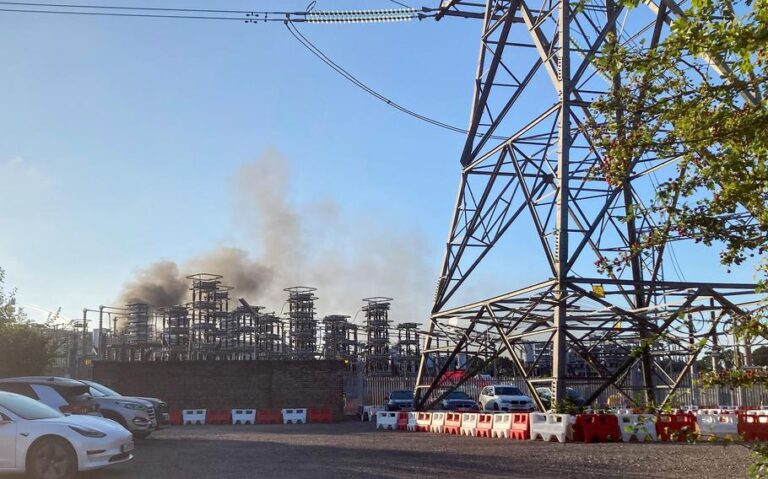Much of the world has been turning away from nuclear power, with its ageing plants, legacy of meltdowns and radioactive waste. But some governments, big companies and billionaires including Bill Gates and Warren Buffett are convinced the technology can help save the planet.
Unlike wind and solar sources, nuclear power can be switched on and off at any time, and without the planet-warming emissions produced by gas and coal.
Investments of hundreds of millions of dollars are going toward a new generation of so-called small modular reactors (SMRs), which ultimately could provide a safe and nimble source of carbon-free energy – if they can overcome challenges related to economics, safety and public opinion.
HOW SMALL IS SMALL?
Of the more than 70 such reactors that the International Atomic Energy Agency lists as in some stage of design or development, the smallest are less than 5m in diameter and 10m in height. (The plant that would be built to operate the reactor would be bigger, of course.)
SMRs typically have less than 300 megawatts of generating capacity, about a third of that of existing reactors. The “M” in SMR – modular – means these reactors can largely be built in factories and shipped in standardised parts for assembly on-site. That means shorter construction times and greater flexibility to expand to meet demand.
WHY AREN’T TRADITIONAL NUCLEAR PLANTS ENOUGH?
Since the Fukushima Dai-ichi meltdowns in Japan in 2011, there has been a dearth of investor interest in building expensive new plants, with China, Russia and India as notable exceptions.
Instead, utilities have gravitated toward carbon-intensive coal and gas plants to supplement less reliable solar and wind resources. That has led climate advocates such as James Hansen, one of the first scientists to publicly warn about the danger of global warming, to call for more nuclear energy.
DO SMRS ALREADY EXIST?
The only ones currently in commercial operation are two 35-megawatt units on a floating power plant deployed by Russia in the Arctic in 2020. China expects to begin trials in 2026 on an SMR being built near an existing power plant on Hainan island.
The first commercial SMR project in the US, planned for the site of the Idaho National Laboratory, will consist of six reactors capable of producing a combined 462 megawatts. It’s supposed to be operational by the end of this decade.
ARE THEY SAFE?
Proponents say SMRs will be safer than earlier generations of nuclear power plants.
The basic idea remains the same – splitting atoms to release energy, a process known as nuclear fission, that heats water to produce steam that spins turbines to make electricity. About half of the SMR models under development use water as a coolant, as most currently operating reactors do.
Explosions at Fukushima and at Three Mile Island in the US in 1979 were caused by heat from exposed fuel rods splitting the hydrogen from the steam used to cool the reactor.
Some SMR designs, by contrast, use molten salt and metals as coolants. SMR designs also integrate new kinds of fuel and backup emergency systems that should reduce the likelihood of meltdowns.
On the other hand, smaller reactors would ideally be located closer to population centers, increasing the possible danger from an accident. And like their larger brethren, SMRs produce radioactive waste that must be stored safely for centuries.
WHAT ARE THE ECONOMIC CHALLENGES?
Cost competitiveness is an uphill climb. US manufacturer NuScale Power, to cite one example, is aiming for an SMR that can sell power for US$55 per megawatt-hour.
Yet wind power in much of the world is now about US$44 a megawatt-hour, solar is US$50, and in some regions, renewable energy will be below US$20 a megawatt-hour by the end of the decade, according to BloombergNEF.
A 2020 study by professors at the University of British Columbia found that on a lifetime basis, the cost of electricity produced by SMRs could be 10 times greater than the cost of electricity produced by diesel fuel.
The economics might be more favorable when considering SMRs as alternatives to large-scale batteries to serve as at-the-ready backups for solar and wind power when the sun isn’t shining or the wind isn’t blowing.
WHO’S INVESTING IN SMRS?
Electricite de France, China National Nuclear, Japan’s Toshiba and Russia’s Rosatom are pushing SMR designs, as is NuScale. Gates and Buffett have teamed up to build and test a reactor at an abandoned coal plant in Wyoming.
Rolls-Royce Holdings raised £455 million (US$608 million) to fund the development of SMRs, with almost half of the financing coming from the UK government. The Canadian and US governments have also offered hundreds of millions of dollars in subsidies to kick-start the SMR industry.










NEW YORK – One way or another, central banks’ behavior will have to change with the climate. But it should evolve only because climate change will create new constraints and drive new forms of public and private economic activity. Central banks’ primary function should not change, nor should they adopt “green” targets that could undermine the pursuit of their traditional objectives: financial stability and price stability (which in the United States is a dual mandate of price stability and maximum employment).
Climate change will be a defining global issue for decades to come, because we are still a very long way from ushering in a low-carbon, climate-resilient world. Three features of our greenhouse-gas (GHG) emissions will impede the appropriate response. First, the benefits (cheap energy) are enjoyed in the present while the costs (global warming) are incurred in the future. Second, the benefits are “local” (they accrue to the GHG emitter) while the costs are global – a classic externality. Third, the most efficient methods of limiting GHG emissions impose disproportionate burdens on developing countries, while the task of compensating poor countries remains politically fraught.
The most efficient way to address climate-change externalities is through targeted fiscal and regulatory measures. Pigouvian taxes or tradable quotas would create the right incentives for reducing GHG emissions. Carbon taxes, as advocated by William D. Nordhaus of Yale University, must become the global norm (though it is difficult to envisage a global carbon tax working without a significant transfer of wealth from developed to developing countries). Rules and regulations targeting energy use and emissions can complement green taxes and quotas, and public spending can support research and development in the green technologies that we will need.
What does not belong in the mix is a green mandate for central banks. To be sure, legal mandates can change, and central banks have a well-established tradition of exceeding them. The European Central Bank’s financial-stability mandate is secondary to – “without prejudice to” – its price-stability mandate. This did not prevent it from acting decisively and quite effectively during the global financial crisis, the eurozone sovereign debt crisis, and the COVID-19 crisis, even when this meant overriding the price-stability target in 2021 and likely also in 2022. Moreover, Article Three of the Treaty on European Union explicitly provides for “a high level of protection and improvement of the quality of the environment,” so it is easy to see how the ECB’s financial-stability and monetary instruments could be used to target climate change.
But that does not mean they should be used in this fashion. The standard monetary-policy instruments (one or more policy interest rates, the size and composition of the central bank’s balance sheet, forward guidance, and yield curve control) are typically used to target price stability or the dual mandate. Judging by the results, there is no spare capacity in the monetary-policy arsenal.
These monetary-policy instruments impact financial stability as well, and not always in desirable ways. In addition, capital and liquidity requirements underpin micro- and macroprudential stability; and central banks can impose additional conditions on the size and composition of regulated entities’ balance sheets. As the lender and market maker of last resort, the central bank can choose its eligible counterparties, the instruments accepted as collateral or bought outright, and the terms and conditions on which it lends or makes outright purchases.
There is no doubt that climate change affects a central bank’s price-stability objective, including through current and anticipated changes in aggregate demand and supply, energy prices, and other channels. Climate change also could significantly alter the transmission of monetary policy, and thus will have to become an integral part of the models that guide central banks in pursuit of their primary objectives.
Green issues also affect financial stability in major ways. Extreme weather events can damage assets held by financial institutions and their counterparties. Climate-mitigation and adaptation efforts can depress the value of assets, potentially leaving many “stranded” or worthless. A central bank’s financial-stability mandate requires it to recognize and respond appropriately to the foreseeable effects that climate change will have on asset valuations and on the liquidity and solvency of all systemically important financial entities and their counterparties in the real economy.
But anticipating and responding appropriately to these risks now and in the future does not mean that higher capital or liquidity requirements should be imposed on “brown” loans, bonds, and other financial instruments. Financial-stability risks and global-warming risks are not perfectly correlated. Moreover, there are no redundant financial-stability policy instruments, and capital and liquidity requirements have a clear comparative advantage in pursuing financial-stability objectives, just as carbon taxes and emissions-trading systems have a clear comparative advantage in pursuing and achieving “green” objectives.
The shocks and disruptions caused by climate change will complicate central banks’ pursuit of their price-stability and financial-stability mandates. The last thing they need is to feel pressure to load additional objectives on their limited instruments. Just as it makes no sense to use carbon taxes or emissions-trading schemes to target financial stability, it makes no sense to use capital and liquidity requirements to address global warming. The appropriate tools to address climate change – fiscal and regulatory – are well-known and technically feasible. What is missing is the foresight, logic, and moral courage to deploy them.